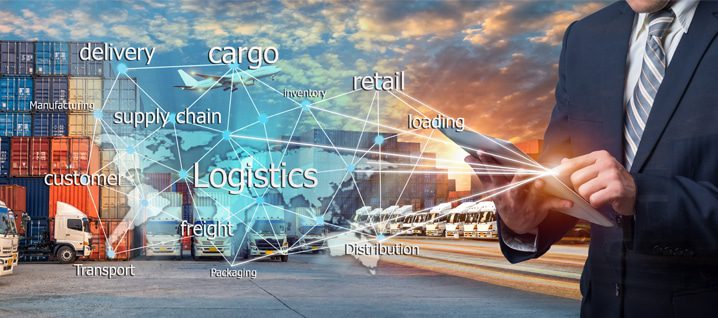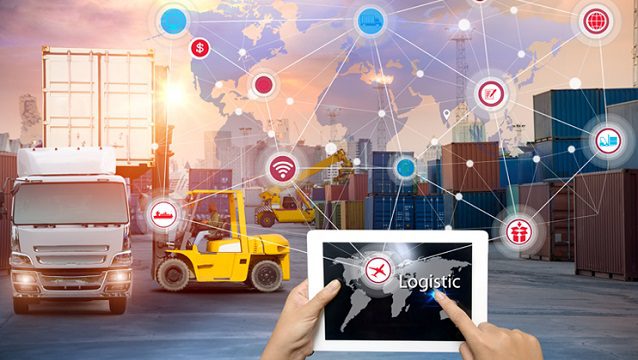Understanding Logistics Management
Table of Contents
Logistics Management
Logistics Management involves management of all of the steps required to fulfil consumer demand by planning, controlling, and putting in place efficient transportation and storage methods to source and deliver needed information, products, and services. Companies can save costs and improve customer service by using logistics management.
Beginning with raw material collection, the logistics management process has five distinct stages till the product is delivered to the destination.
Logistics management promotes process strategy, planning, and execution by considering customers’ requirements and industry norms.

Different Types of Logistics Management
When it comes to logistics management, there are four major kinds, each of which emphasises a distinct element of the supply process.
1. Supply Management and Logistics
The activity includes all of the phases from planning to procurement and coordination of the materials required at a certain time and location for the completion of a project. In addition to transportation, it must also have storage facilities. Furthermore, to make sure that the requirements of the client are fulfilled, it is also necessary to evaluate the amount of supply at each step of the process, such as shipping supplies to a building site or producing components.
2. Distribution and Material Movement
This moves materials from where they are kept to where they are needed. This topic involves loading, unloading, and transportation, as well as managing inventory. In this kind of administration, a central warehouse is used to deliver products to shops, which sell the items to the general population.
3. Production Logistics and Management
This controls the phases of distributing various resources in order to produce a finished product, such as coordinating all of the necessary resources to fabricate or assemble something. Staging the resources and constructing a product are two different tasks, which must be carefully coordinated in order to succeed. Product management is included in this category of logistics management.
4. Reverse Logistics and Product Return
Reclaiming resources and supplies from manufacturing is the core of this concept. For example, in building, removing surplus material and returning those items to one’s inventory is called the operational phase. The product may also refer to undesired or unused goods returned to the final consumer in an effort to get a refund.

You May Also Like To Read: How Logistics Functions ? 6 Major Functions of Logistics
4 Primary Logistics Management Activities
1. Transportation
Transportation enables a company to maximise market possibilities. Inadequate transportation services, such as nonavailability of transportation services, unclear transit times, and so on, will impede marketing efforts.
When making a transportation mode selection, the decision maker should consider the following factors:
- Costs
- The mode’s dependability
- Transit loss and damage
- The mode’s reach
- The speed with which the business can reach the market
2. Warehousing
Warehousing is the process of storing goods.
The organisation may choose to operate its own warehouse or use the services of third-party warehouses.
Whenever a business utilises its own or a third-party warehouse, the following choices must be made:
- The number and location of warehouses
- The level of customer service needed
- The cost of distribution
- The kind of technology to be deployed—automated or otherwise
3. Inventory Control
Inventory levels can have an effect on a firm’s competitive edge. The marketer must strike a delicate balance between stock outs and stockpiles in this case. Numerous businesses are attempting to handle this function via a Just in Time (JIT) approach.
4. Third Party Logistics
Today, the nation is home to a number of third-party logistics companies. These companies specialise in the creation and implementation of novel and creative packaging, handling, transportation, and freight management techniques.
Third-party logistics is gaining traction for many reasons:
- They are able to provide superior services as a result of their core capabilities.
- They reduce internal system development and personnel expenses
- They tailor their services to the specific requirements of their customers
- They assist in cost management and customer service improvement
When selecting a third-party logistic provider, consider the following factors:
- Competence in the logistic organization’s approach, culture, and attitude
- Quality of services to be provided
- Experience in a particular line
- Performance track record
- Financial muscle
- Brand image
Thus, logistics choices are very complicated nowadays and require a great deal of time from the decision maker. A smart logistical choice may help build brand equity.
Why Is Logistics Management Important?
When one considers that logistics management is focused on developing more efficient and effective methods to transfer resources and goods from inception through delivery, and then ultimately to the consumer, the main objective of the logistics management profession becomes crystal clear. Customer demand and excellent service are the motivating forces behind these initiatives.
For consumers demanding greater service, speed, accuracy, and quality are required. To ensure client pleasure, ensure that your supply chain is running smoothly.
Although this is just one of the many advantages of logistics management, Having a supply chain visible to the public is also beneficial to the company. Logistics managers can improve the flow of materials by evaluating previous data and monitoring the movement of products in real time.
Revenue is driven up by logistics management, which helps develop the company. When it is well-executed, this strategy enhances customer service, contributes to the company’s excellent reputation, and also results in new and more business. Increased visibility into the supply chain offers the ability to manage incoming money, maintain appropriate inventory levels, and organise the movement of products in the opposite direction.

Thanks For Reading: Understanding Logistics Management
Powered By 360Presence




